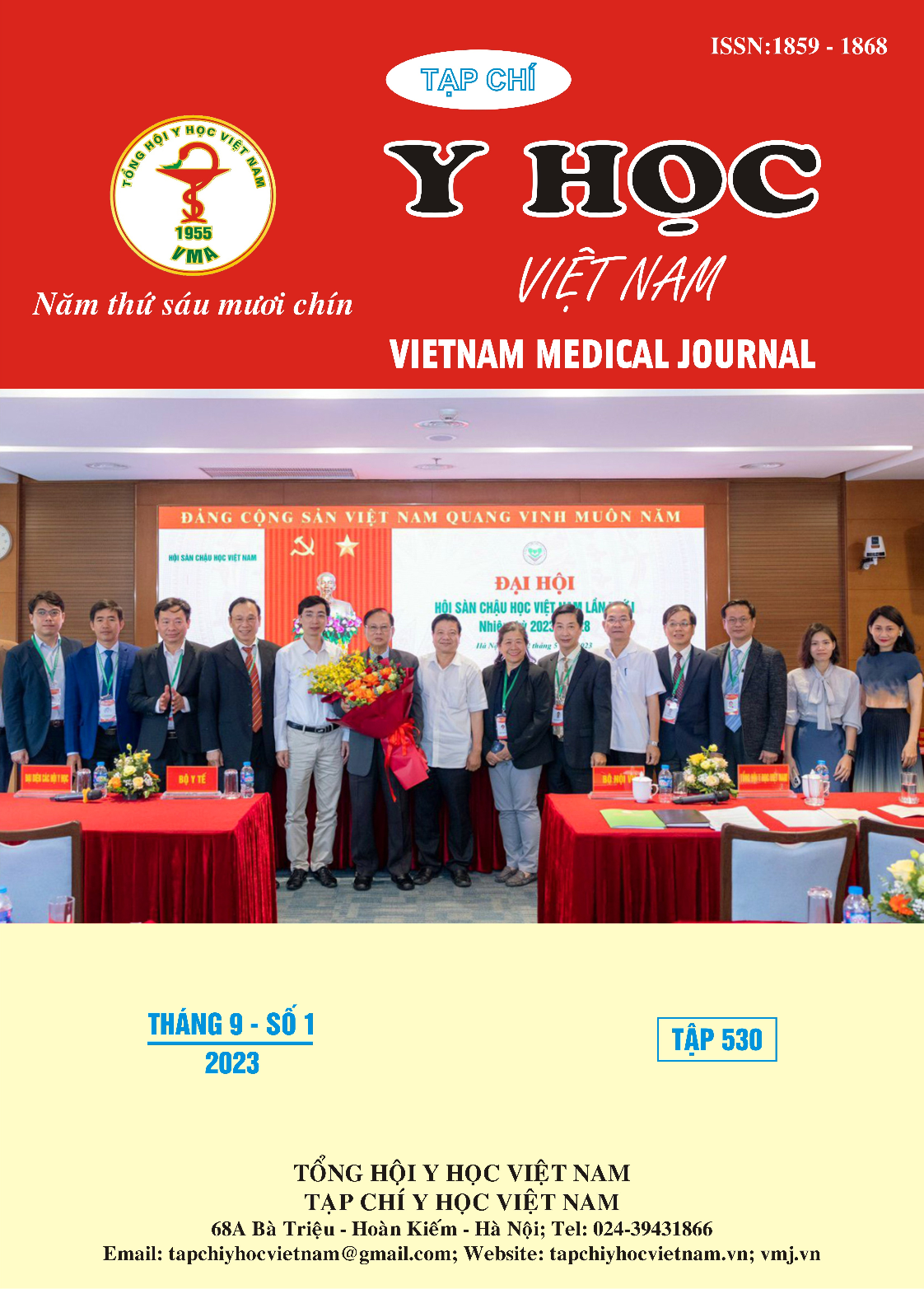EPIDEMIOLOGICAL CHARACTERISTICS AND RESULTS OF TREATMENT OF MALARIA AT NATIONAL HOSPITAL FOR TROPICAL DISEASES
Main Article Content
Abstract
Malaria is a dangerous infectious disease that can become an epidemic with a high mortality rate. In recent years, the world has witnessed emerging pandemics such as COVID-19, monkey flu, and malaria that have a chance to break out again. The objective of the study was to describe the epidemiological characteristics and outcomes of treatment of malaria over the past 5 years. A cross-sectional descriptive study on 65 malaria patients over 18 years old diagnosed and treated at the National Hospital for Tropical Diseases from January 2017 to June 2022. The results show that in the past 5 years, at the National Hospital for Tropical Diseases, the number of malaria patients with parasite infections in Vietnam was low, accounting for 9.2%, but more than 90.8% had sources of infection from other countries (mainly in Africa with 84.5%). The number of patients tested for malaria decreased gradually from 2017 to 2022, however, there was a re-emergence of malaria patients with the COVID-19 pandemic. 81% of malaria patients without complications were cured, 85.7% of malaria patients with complications were cured. There is a shift in the source of malaria transmission in the world.
Article Details
Keywords
Malaria, Epidemiological, results of treament.
References
2. Kaushik Bharati and N.K.Ganguly (2013), Tackling the malaria problem in the South – East Asian Region need for changer policy, India Jounal Med Res, Vol.137: 36-47.
3. Nguyễn Vân Hồng, Peter Van de Eede và CS (2008), “Trường hợp đầu tiên nhiễm Plasmodium knowlesi tại Việt Nam”, Công trình khoa học, báo cáo tại hội nghị ký sinh trùng lần thứ 33: 194-197.
4. WHO (2019), Countries of the Greater Mekong zero in on falciparum malaria 2019.
5. Nguyễn Văn Dũng (2014), Đặc điểm dịch tễ, lâm sàng và kết quả điều trị bệnh sốt rét tại Bệnh viện Bệnh Nhiệt đới Trung ương 2011- 2014. Luận văn thạc sỹ - chuyên ngành truyền nhiễm - 2014, 35 – 60
6. Viện Sốt rét – Ký sinh trùng – Côn trùng Trung ương (2018). Báo cáo tổng kết công tác phòng chống và loại trừ sốt rét năm 2017 và kế hoạch năm 2018.
7. Hoàng Hà, Đinh Thị Hòa, Lê Việt, Lê Thạnh, Bùi Hữu Núi, Trung tâm PCSR tỉnh Savanakhet (2011), Hợp tác nghiên cứu bệnh sốt rét vùng biên giới giữa hai tỉnh Savanakhet, Lào và Quảng Trị, Việt Nam, Công trình khoa học báo cáo tại Hội nghị ký sinh trùng toàn quốc lần thứ 38, tập 1: Bệnh Sốt rét, Nhà xuất bản Y học, 2011, tr.241-249
8. Nguyễn Văn Quân (2020), Nghiên cứu một số đặc điểm dịch tễ học bệnh sốt rét và biện pháp phòng chống tăng cường tại vùng sốt rét có dân di biến động ở Bình Phước và Gia Lai (2016-2017), Luận án tiến sỹ sinh học, Viện Sốt rét – Ký sinh trùng – Côn trùng Trung ương.
9. Hong Nguyen V., Van den Eede P., Van Overmeir C, et al. (2012). The distribution of human Plasmodium species in central Vietnam is complex with marked age-dependent prevalence of symptomatic and patent infections. Am J Trop Med Hyg, 87, 989-995.
10. Vũ Mạnh Lợi (2016), Nghiên cứu về tính dễ bị tổn thương của người di cư với sốt rét và đặc điểm dịch tễ sốt rét kháng artemisinin tại tỉnh Bình Phước, Việt Nam.


